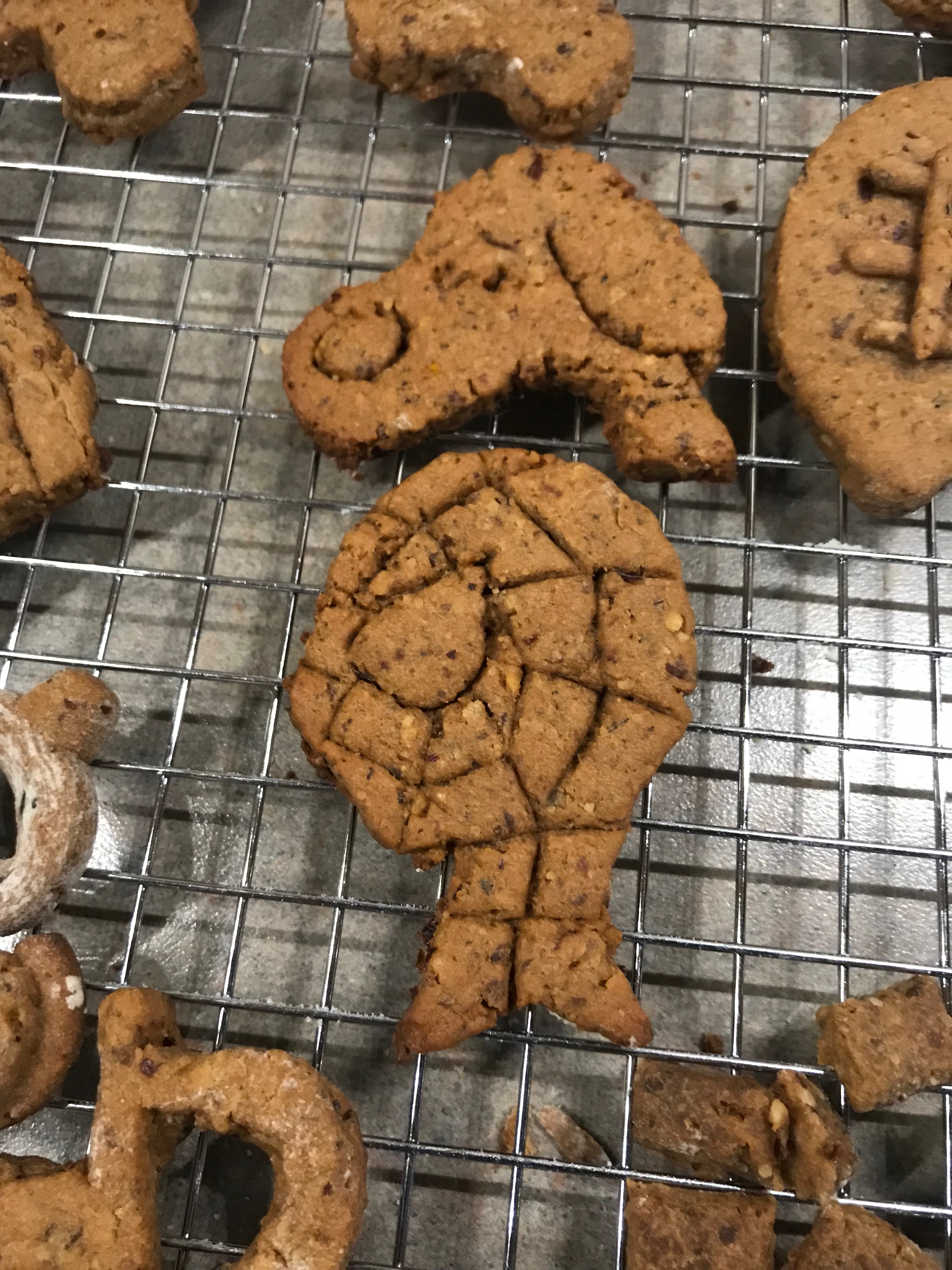My wife’s family has a decades-old tradition of making their own, distinctive version of the German cookie lebkuchen. My family hails from Appalachia, so I had literally never heard of this traditional Christmas cookie before I met my wife. Years later, when I encountered traditional lebkuchen on a trip to Europe, I was surprised to learn their family recipe produced a treat virtually unrecognizable from the traditional cookie.
The lebkuchen I first saw in Germany—and I have now seen in the United States upon occasion—is similar to a gingerbread cookie. The ones I saw in Europe were often glazed and decorated with icing and many were formed in the shape of hearts though most were round. Other lebkuchen was completely covered with dark chocolate. The cookies are the thickness of a gingerbread cookie and are sweetened with honey. In fact, the forerunner of traditional lebkuchen was called a “honey cake” which eventually led to the invention of lebkuchen by German monks in the 13th Century. There are many varieties of the cookies produced in Europe, but common ingredients include the aforementioned honey along with nuts, spices, and candied fruit.
The lebkuchen made by my wife’s family—who with the name Pottebaum is clearly from German stock—is instead flat, moist bars sweetened primarily with molasses. The recipe is one that we know dates back to my wife’s paternal grandmother but is undoubtedly much older than that.

The lebkuchen cookie-making is traditionally done the day after Thanksgiving in the family. This year was the first time I had helped make it in many years. When my wife and her mother used to make it years ago, I would occasionally be called upon to help. While the batch they made was not as big as is now made, I don’t know how the two of them did it.
To begin, dried raisins and currants and a variety of candied food such as cherries and lemon peel are fed through a meat grinder, along with walnuts upon occasion which have the added benefit of helping to clear the grinder of all the sticky fruit. When my wife made the cookies years ago, she and her mother used a hand-cranked meat grinder that was affixed to the kitchen counter with a vacuum seal. We now use an electric meat grinder.
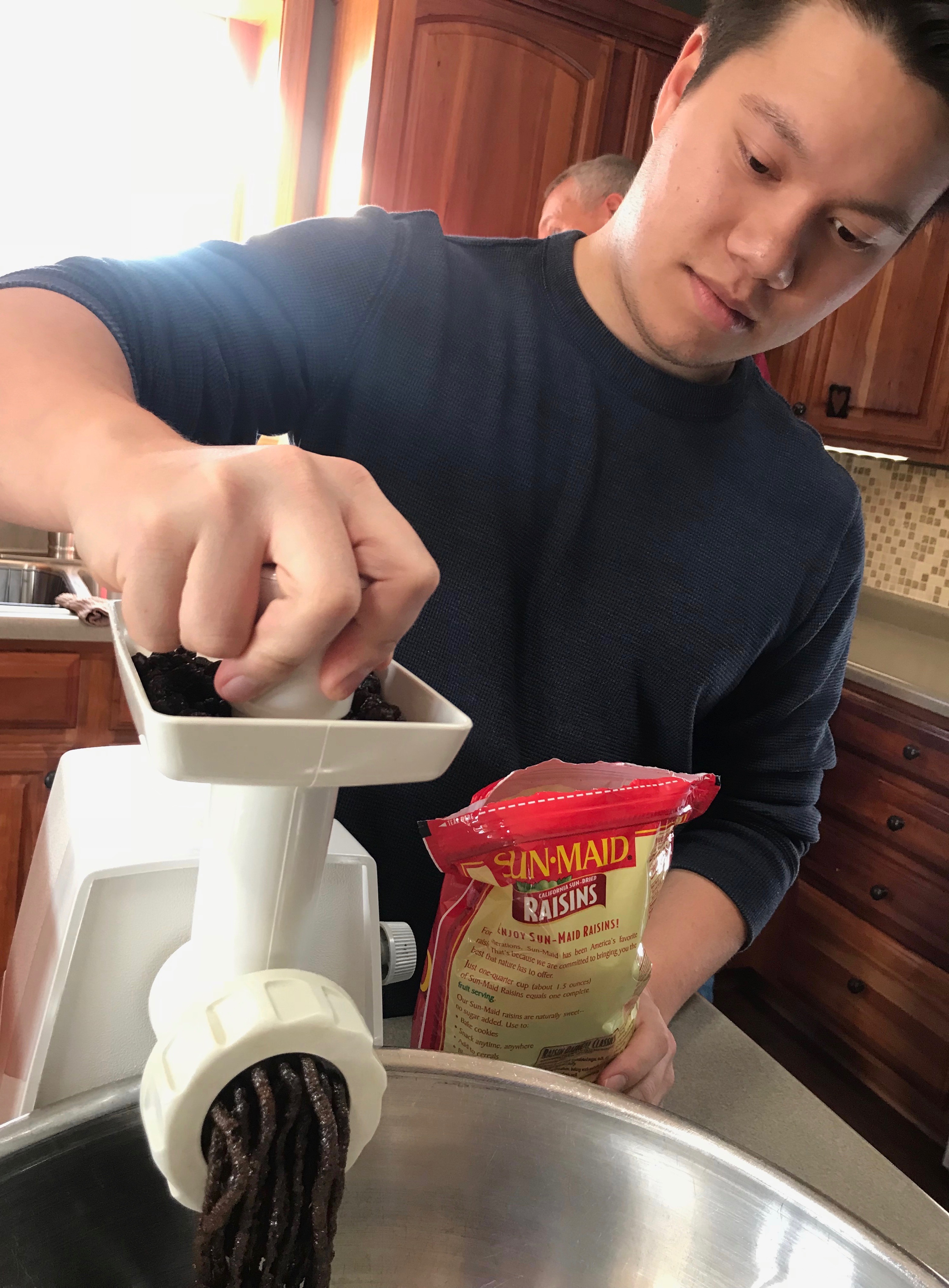
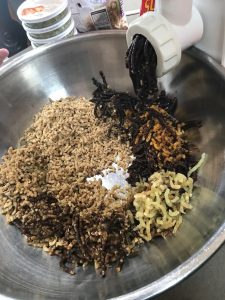
The ground contents land in an enormous bowl and are stirred together. Heated molasses is stirred in followed by buttermilk. Flour is then added and the sticky mixture has to be stirred. What I remember most about helping my wife and mother-in-law years ago was that as I would stir, it was not uncommon that the handles of the wooden spoons would snap in two. While we now use teak spoons that can withstand the pressure, it literally takes one person to hold the bowl while another stirs the mixture holding the spoon with both hands while having to move their torso at the same time in order to stir so much dough.

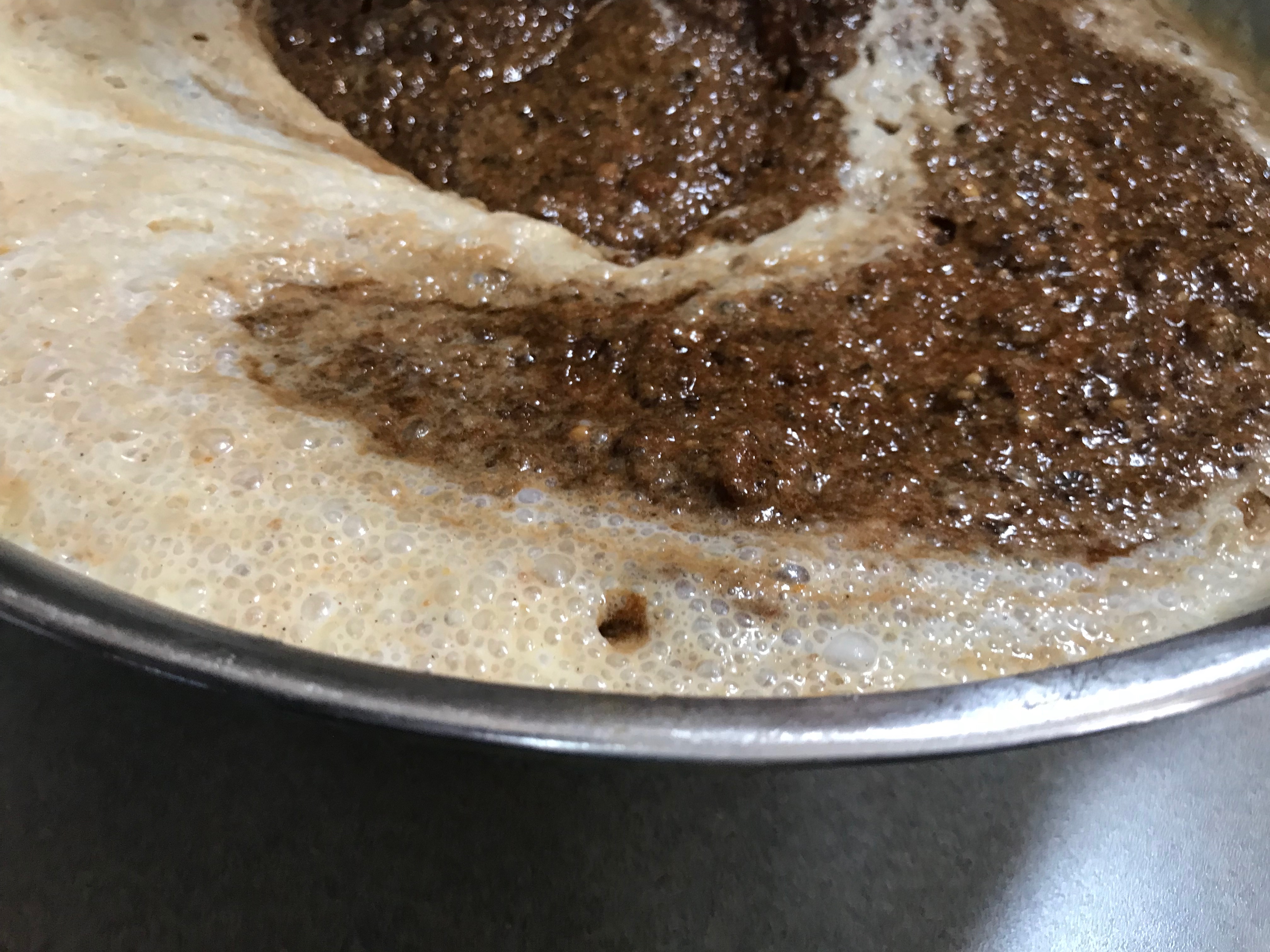
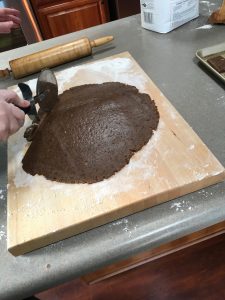
The moist dough is rolled out in a thin layer and cut into bar shapes, then baked until done. The cookies do not rise much and when done are much thinner than traditional lebkuchen. Allowing for a lunch break in between, the whole process took about six hours. We made literally hundreds of cookies.
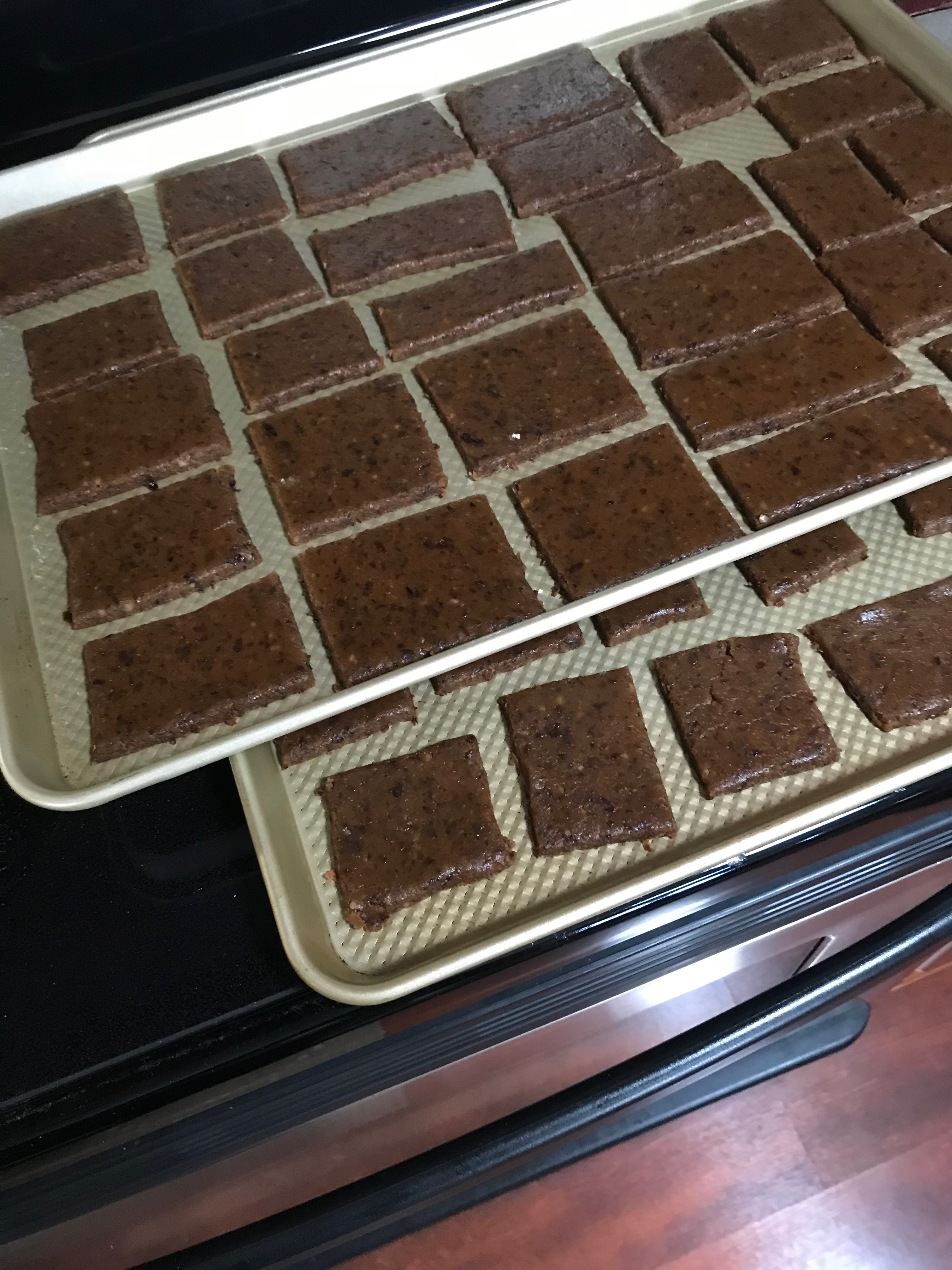
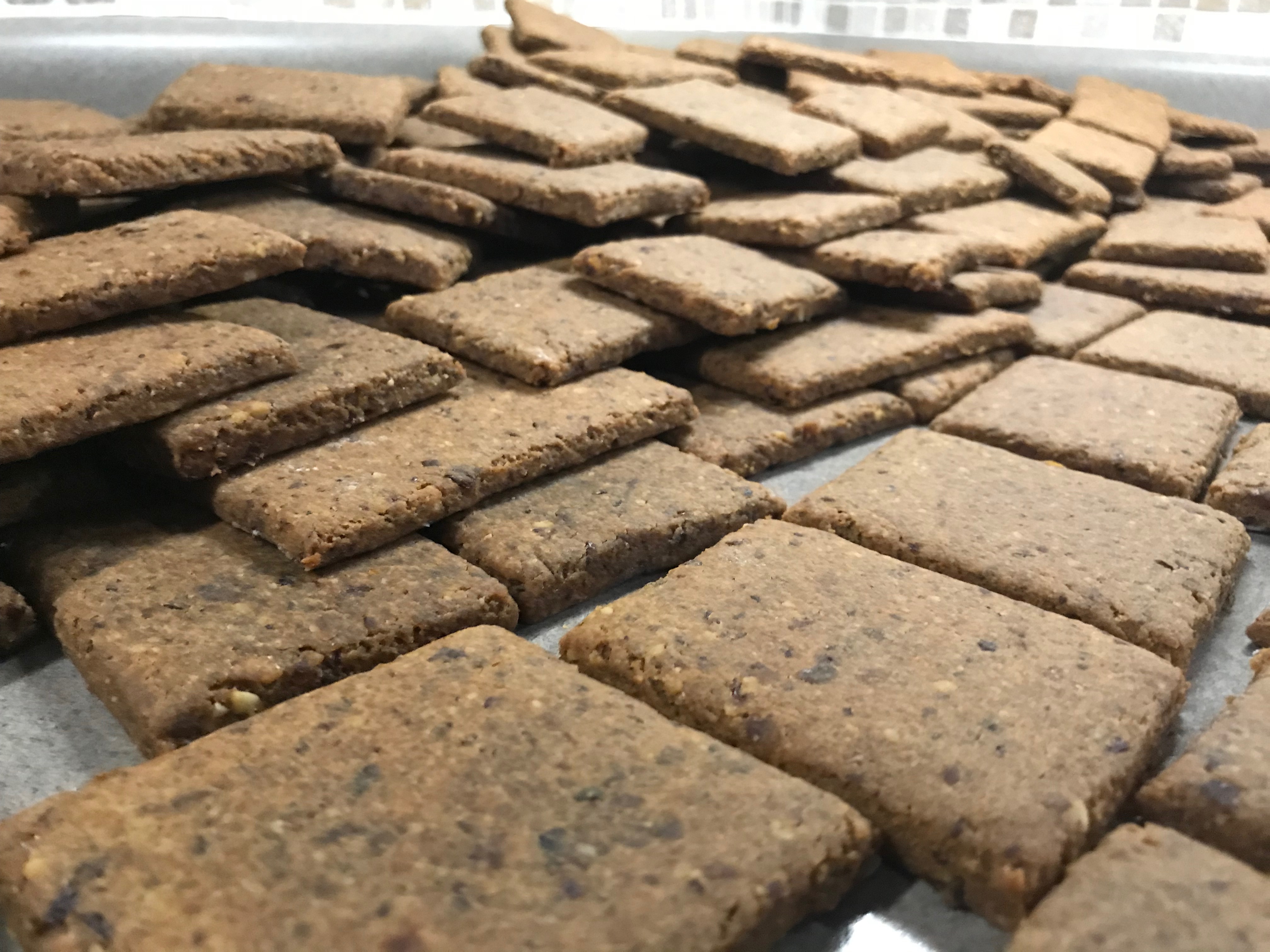

At the end, we take the remaining dough and try more interesting shapes. This year, I cut shapes and used the knife point to carve into them. Since the cookies do not rise much, they retained my carved lines well.

By the way, the reason the cookies are made the day after Thanksgiving is to give them more than a month to age. They get better with age and I have even had lebkuchen that was many months old.
